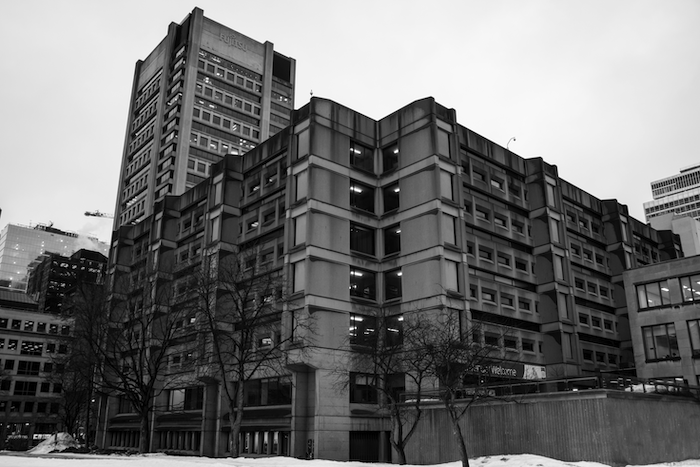For many students, midterms, paper writing, and the pressure of the approaching finals season means that they must spend the majority of their waking hours in the infamous McLennan-Redpath Library Complex. McLennan-Redpath is known to evoke strong feelings of anxiety, dread, and stress among its dwellers, due in large part to its drab lighting and brutalist architectural scheme. The libraries’ condition is an issue that Tre Mansdoerfer, president of the Students’ Society of McGill University (SSMU), has raised with administration.
“Everyone, including the librarians, agree that [McLennan] is very outdated and that whoever originally built the building did a poor job of planning it,” Mansdoerfer said. “It’s a really sad place to be in.”
McGill must respond to students’ grievances regarding McLennan-Redpath with the extensive and necessary changes for students to be able to work productively in their library. To this end, McGill proposed the Fiat Lux project in 2014, a library improvement project that aims to address concerns by focusing on acquiring digital materials over print and expanding physical userspace. The plan includes a total overhaul of the library’s outdated construction and footprint. Fiat Lux is a three-phase plan that would begin by moving McLennan/Redpath’s unused books off-site and then completely rebuilding the Redpath Library, before, finally, renovating McLennan to increase much-needed natural light and allow for greater ease of movement.
The McLennan-Redpath complex is the largest library on campus, but students often cannot find space to work in the library, leaving them with few options for quiet study spots on campus. This is detrimental to students’ mental health and, consequently, their schoolwork. Little has been done to improve McLennan since it was built over 50 years ago, and its impracticality has burdened McGill students for just as long. Change is long overdue.
In 2018, McGill announced plans to shift some of its collection around over the summer to create 100 new study spots on the second floor. But, just from looking at the crowds of students in McLennan this midterm season, it’s obvious that more than a few hundred extra seats are necessary. According to the Fiat Lux Master Plan, libraries at a public research university of McGill’s size should be able to accommodate 15–25 per cent of the student population with 30-35 square feet allocated per seat. However, all of McGill’s libraries combined have space for a mere nine per cent of its population. So, it’s only natural that McLennan often feels so cramped and overcrowded that you can practically feel other students’ stress emanating throughout it.
Despite the 30-page master plan published in 2015, the Fiat Lux webpage seems to have been abandoned since then, with little information regarding the timelines of these improvements or whether they will ever come to be. The SSMU Library Improvement Fund website is also outdated and provides little useful information. McGill seems to have begun implementing the first phase of the plan, but this is also unclear: A common theme throughout the McLennan improvement plan. However, according to Mansdoerfer, the university plans to have the project completed some time in the next decade.
Improving McLennan and the rest of McGill’s libraries should be one of the school’s top priorities, although, right now, it clearly is not. Its lack of quiet study spaces or group study areas, sufficient lighting, and general inaccessibility make it much more difficult for McGill students to study. We should not have to worry about these factors on top of our already strenuous workloads.
The SSMU Library Improvement Fund Committee (LIFC) is accepting proposals to improve the downtown McGill libraries. Students will no doubt have a lot to say.








